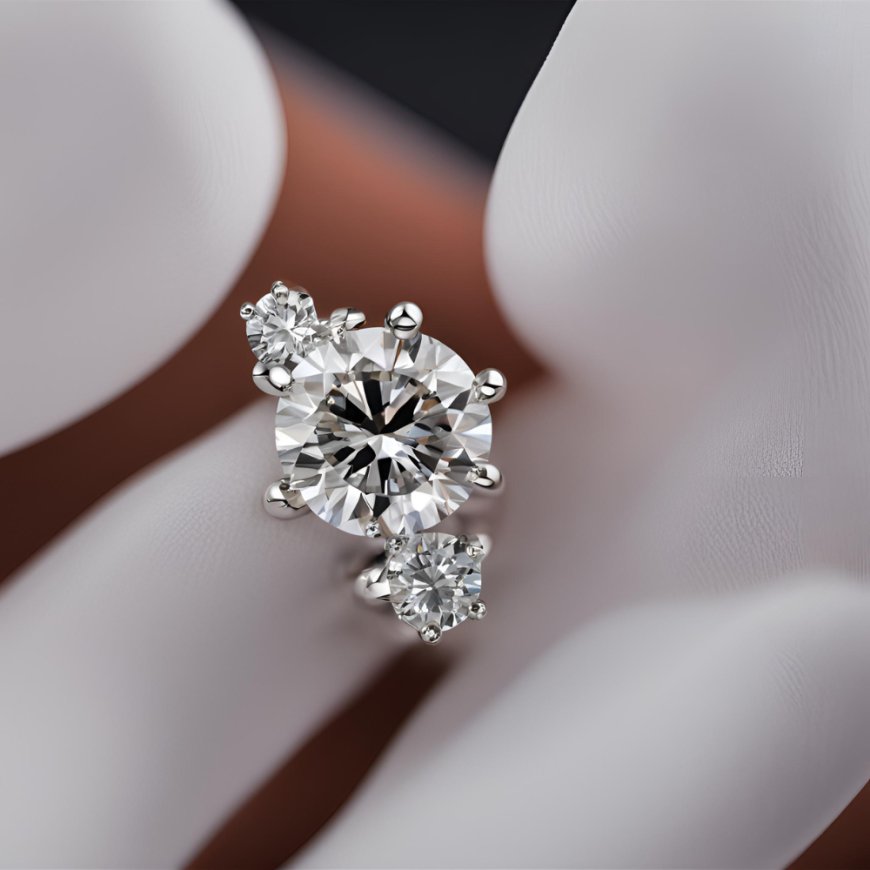The Ethical Choice: Exploring Lab Grown Diamond Jewelry
Discover the ethical allure of lab grown diamond jewelry. Explore sustainable luxury and eco-friendly elegance with our insightful guide.

In the world of jewelry, diamonds have always held a special allure. They symbolize love, commitment, and luxury. However, behind the sparkle lies a complex industry with ethical and environmental concerns. In recent years, an alternative has emerged – lab-grown diamonds. Let’s delve into this ethical choice and explore why lab-grown diamond jewelry is gaining traction.
The Origin Story
Traditional diamonds are formed deep within the earth's mantle over millions of years through natural processes. They are then mined from the earth, a process that often involves environmental disruption, human rights abuses, and conflict financing in some regions. These issues have led conscientious consumers to seek out alternatives.
Enter lab-grown diamonds. These gems are created in controlled environments that simulate the natural diamond-growing process. By replicating the conditions found in the earth's mantle, scientists can produce diamonds with the same chemical composition and physical properties as mined diamonds.
Ethical Implications
One of the primary reasons for the growing popularity of lab-grown diamonds is their ethical appeal. Unlike mined diamonds, which can be associated with exploitative labor practices and environmental damage, lab-grown diamonds offer a more transparent and ethically sound option.
Laboratory-grown diamonds are produced without the human rights abuses often associated with traditional diamond mining. Additionally, their production has a significantly lower environmental impact, as it does not require large-scale mining operations or the destruction of ecosystems.
Environmental Benefits
The environmental benefits of lab grown diamond rings are substantial. Traditional diamond mining can result in deforestation, soil erosion, and habitat destruction. Moreover, the energy-intensive processes involved in mining and transportation contribute to greenhouse gas emissions and climate change.
In contrast, lab-grown diamonds have a smaller carbon footprint. While their production still requires energy, advancements in technology have made the process more efficient, and some companies even use renewable energy sources to power their facilities. Furthermore, lab-grown diamonds eliminate the need for mining, reducing the associated environmental damage.
Quality and Affordability
Beyond their ethical and environmental advantages, lab-grown diamonds offer comparable quality to mined diamonds. In fact, many experts argue that lab-grown diamonds are virtually indistinguishable from their natural counterparts, both in appearance and durability. They exhibit the same brilliance, clarity, and hardness as mined diamonds, making them a desirable choice for jewelry.
Moreover, lab-grown diamonds are often more affordable than mined diamonds. Since they can be produced in large quantities in a controlled environment, their price tends to be lower. This accessibility makes them an attractive option for consumers who want a beautiful, high-quality diamond without the hefty price tag.
Conclusion
As consumers become more conscious of the ethical and environmental impact of their purchasing decisions, lab grown diamond jewelry has emerged as a compelling alternative to traditional mined diamonds. Offering ethical sourcing, environmental sustainability, and comparable quality at a more affordable price point, lab-grown diamonds represent the future of the diamond industry.
By choosing lab-grown diamond jewelry, consumers can make a statement in support of ethical practices and environmental stewardship without compromising on beauty or quality. As awareness grows and technology advances, the shift towards lab-grown diamonds is likely to accelerate, paving the way for a more sustainable and responsible diamond industry.

 Olajewelers
Olajewelers 










